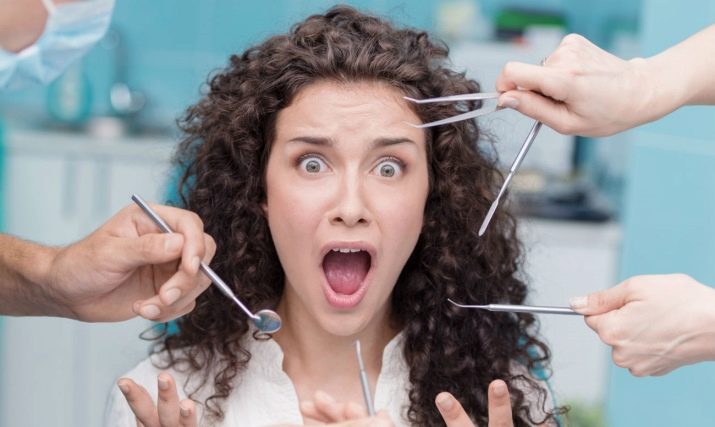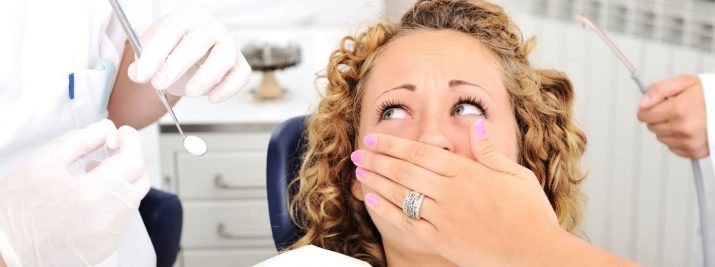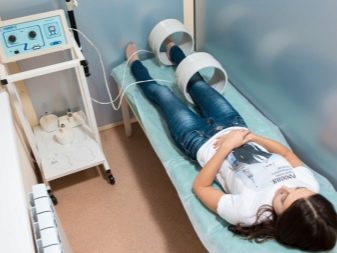Jatrophobia: what is it and how to get rid of it?

There are people who cannot imagine their life without visiting doctors. They are ready to sit in lines and seek help from specialists with or without reason. This calms them down and gives them hope for health. Others, on the contrary, are afraid to even approach medical facilities. From one of their species, such individuals have an unpleasant feeling. And when the need to visit the hospital comes, they panic. This is how the disease of jatrophobia or nosomephobia manifests itself.

Description and related phobias
First of all, it should be noted that the name of the disease, which defines the fear associated with doctors, translated from Greek as follows: ατρός - "doctor", φόβος - "fear". The disease, called nosocomophobia, practically does not differ in its essence from jatrophobia and is interpreted as follows: fear of hospitals.
Ordinary people are always anxious before going to the doctor. And this is a common occurrence. This slight fear is associated with a person's simple worries about the state of his health. He understands that in the hospital he may be told unpleasant news about the disease that has arisen.
A normal person accepts the inevitability of what is happening and tries not to "wind up" his consciousness, but simply to experience unpleasant moments. Otherwise, when an individual shows signs of jatrophobia, he begins to be afraid in advance of what has not yet happened.
And this condition is very dangerous because jatrophobes do not go to see a doctor until a critical moment comes. As a result of the fear of doctors, the patient starts his disease, and serious problems begin to threaten his health.

Those people who have already had a negative experience from visiting the hospital are most susceptible to such a condition as the "white coat" syndrome. Even the most harmless manipulations cause them to panic. Measuring blood pressure while undergoing a medical examination can provoke tantrum and fainting.
People who have experienced pain when visiting a doctor are afraid to go back to the appointment. Specialists such as dentists report that their work causes the greatest anxiety in patients. This is due to toothache, which is the most sensitive due to the close location of nerve endings. Therefore, jatrophobes also often become stomatophobes. And these diseases are strongly intertwined.
That's why jatrophobia and nosomephobia are considered collective diseases... They combine several types of phobias at once. Take, for example, a gynecologist. For most women, going to this doctor is far from the best. Other patients are afraid not so much of pain as of contracting some dangerous disease from a dirty needle, for example, AIDS. And this is a completely different kind of phobia.

As a result, people with obsessive-compulsive disorder may be afraid of all the specialists who work in the hospital at once. Even a nurse with a bucket and a rag will make the jatrophobe feel fearful. There is also a category of individuals who are afraid of manipulations carried out in treatment rooms. And all these combined fears can develop into known types of phobias: dentophobia (fear of dentists), tomophobia (a state of panic before surgery), trypanophobia (fear of injections), pharmacophobia (fear of taking medications).
All these fears cause irreparable damage to human health, so it is necessary to eliminate them in time. And for this, you must first identify the causes of the appearance of these phobias.

Causes of occurrence
All sorts of phobias do not arise out of the blue. This is especially true of the fear of hospitals and doctors. A person who drives himself to panic just at the thought of a medical institution may have had a negative experience of visiting a doctor in the recent past.
In an adult, fear can be postponed in the event that he received low-quality assistance: carried out a painful manipulation, after which he almost became disabled. And this fear, on the one hand, is fully justified. On the other hand, a strong personality will not cheat himself and bring his state to the point of absurdity.
In the end, unpleasant situations happen in life, but they cannot be repeated every time you see a doctor. There is only one conclusion: suspicious people are more prone to various obsessions than those who are used to not being distracted by negative moments and continue to live fully and happily.
Doctors also need to treat their patients appropriately. A real doctor who has taken the Hippocratic Oath will not behave inappropriately. On the contrary, in order to tune a person to treatment, he must also be a psychologist who can relieve anxiety. And then the individual will begin to trust the attending physician.
It must be remembered that all our fears come from childhood, so children especially need to be protected from unpleasant situations associated with visiting the hospital.

It must be added to this that there are a number of prerequisites that lead any person to the development of a phobia.
- Social circumstances. If a person is energetically dependent on the people around him, then he has a great risk of "becoming infected" with fear of something. It is enough to hear some unpleasant story on the bus and suspiciousness will complete the process begun.
- Hereditary and genetic circumstances... Parents suffering from obsessive-compulsive disorders in 25% of cases transmit these states to their children. Scientists came to this opinion after numerous studies.
- Biochemical predisposition - this is another circumstance. What is it caused by? Incorrect production of the hormones serotonin, melatonin and adrenaline. Also here can be ranked as an individual addiction to alcohol or drugs. These substances lead to the fact that a person ceases to adequately respond to this world. And doctors who try to help become enemies, as they interfere with receiving dubious pleasures.
- This number of circumstances include psychological reasons, which directly depend on the behavior of the individual and her character. So, let's list them: low self-esteem, negative attitude towards oneself, unfavorable environment, vision of one's future only in black colors, self-isolation from society, overestimated demands on one's “I”, chronic fatigue syndrome.

Symptoms
A person suffering from a fear of doctors, long before visiting a medical institution, begins to wind himself up. Instead of going about daily activities, this individual replays in his mind non-existent future moments of visiting the doctor's office. And each time the projection produces images that look one worse than the other. Ultimately, the phobia grows to such an extent that when the individual actually crosses the therapist's office, they have a panic attack.
In the body of a jatrophobe, at the moment of panic, a certain process is triggered, which contributes to the release of a huge amount of adrenaline. The body is not able to cope with it. And as a result, there are failures in terms of physical health. Serious symptoms are as follows:
- there are failures in breathing;
- the head begins to spin and hurt;
- pressure may rise or fall strongly;
- dry mouth appears;
- a person begins to vomit and vomiting may appear;
- excessive sweating is observed;
- vision deteriorates, speech becomes incoherent;
- there is an inadequate attitude to what is happening.

These manifestations are very dangerous for the patient's health and life. Therefore, it is necessary to take measures to eliminate phobia and improve the work of the whole organism as a whole.
Control methods
If jatrophobia manifests itself in a mild form, then you can cope with it yourself. To do this, you need to overpower yourself only once and get rid of the obsessive state. The main thing is to take the first step, and then it will not be so scary. Inspire yourself that going to a doctor's appointment and treating a diseased organ is a vital necessity.
First, make an appointment with a therapist and go through all the recommended manipulations. After passing the tests, it will definitely become easier for you to overcome your fear and come to the doctor's office. If you have very good results, then the fear will subside on its own. If the tests indicate any deviation, then you will begin treatment, and this fact will also bring reassurance in the sense that after the treatment everything will be fine. Then why be afraid?
It's another matter when the phobia has already become uncontrollable. Then, in order to overcome the fear, you need to see a specialist. He will identify the cause of the obsessional state and prescribe treatment. You may be offered the following methods: cognitive-behavioral therapy, auto-training, hypnosis, neurolinguistic programming.
If the disease has become neglected, then along with the above practices, you will be prescribed treatment with drug therapy: antidepressants, tranquilizers and so on. Taking medications should be supervised by a highly qualified specialist.
It is he who can determine the correct diagnosis and find the right means. Uncontrolled medication can lead to more serious consequences or death.

Working with a psychologist does not give quick results, but they are more effective and practically do not lead to relapses. The specialist will suggest you drink soothing herbal infusions and give the following recommendations.
- Samurai technique: we stretch our chin and take a step towards danger. For greater effect, we take two inhalations and two exhalations.
- Visualizing fear. To do this, we track where the body weakens as soon as panic begins (arms, legs, head, back). At the time of a crisis, you need to strain that part of the body that is most vulnerable.
- Introducing ourselves as a superhero who is not afraid of anything. As soon as there is a reason for panic, “turn on” courage and rely on it.
- Draw your fear on paper. Draw it however you want and draw what you want. Perhaps your fear appears to you in the form of a snake. As soon as the drawing is ready, tear it up, putting in all your emotions.
- Before you get to the doctor's office, you need to "get overwhelmed". Retire to a secluded place and start shaking violently. Your muscles will quickly fatigue and the fear will subside as well. True, this method is difficult to perform in a crowded place, but the one who decided to get rid of the phobia should be decisive in everything.
- Sport helps with fear. It takes up a lot of energy. When a person is exhausted, he wants to think more about sleep than fear.
- Physiotherapy relaxes the brain and muscles. Treatment with the help of current, wave radiation helps well to establish harmony.
In addition, physiotherapy rooms are organized in polyclinic institutions. And this is another incentive to come to the understanding that one should not be mindlessly afraid of such institutions as a hospital.


Jatrophobia in children
The behavior of children in the hospital and the attitude of children towards the hospital largely depend on the attitude of adults. It is they who must make sure that the child ceases to be afraid of doctors. To do this, you must take the following preventive measures.
- Explain to your child in advance that you are going to the doctor tomorrow. Answer his questions in detail and very calmly.
- If your child is worried, then let him or her give his reasons. Let him talk about his concerns. Once he does this, develop them with logical explanations.
- When you enter the office, be calm. Then your little one will understand that there is nothing to worry about in the doctor's office.
- Introduce your baby to medical practice. Play the hospital, for this buy a special play set. Translate all your actions into jokes and explain why you need to get an injection or see the condition of your throat.
As soon as the child feels that your mood does not cause anything dangerous to his life, he will calm down and will no longer cry in the pediatrician's office.

For more information on jatrophobia, see the next video.








